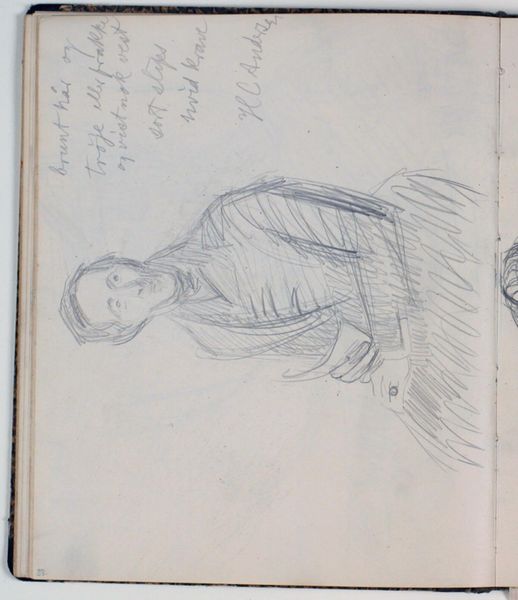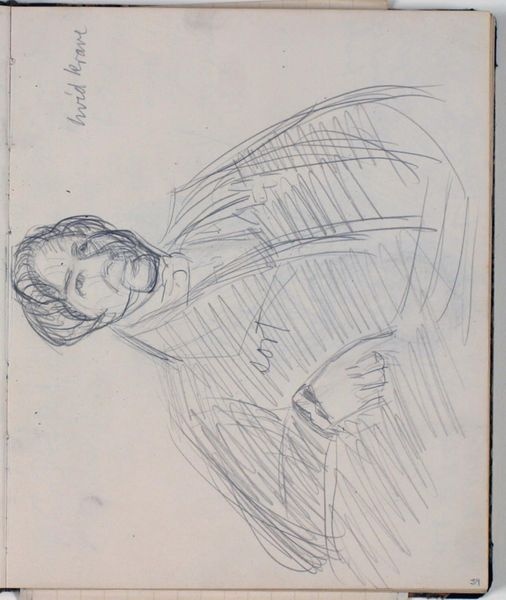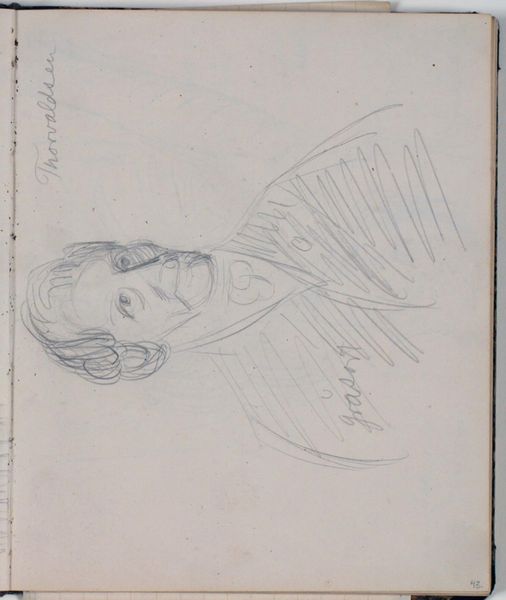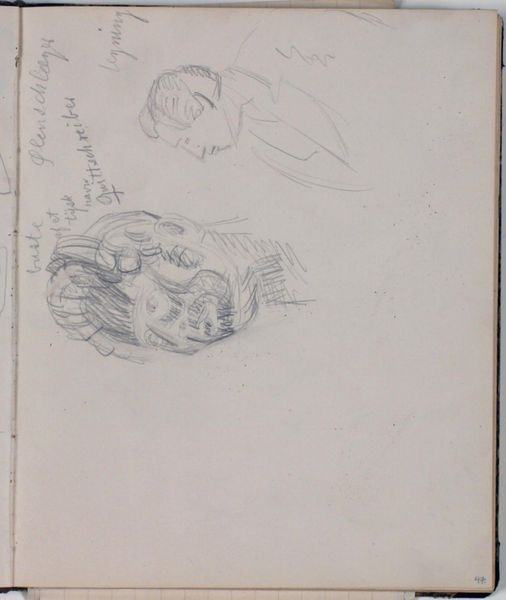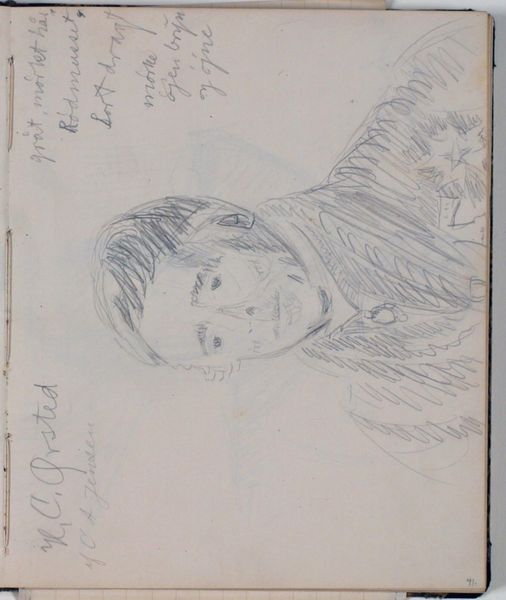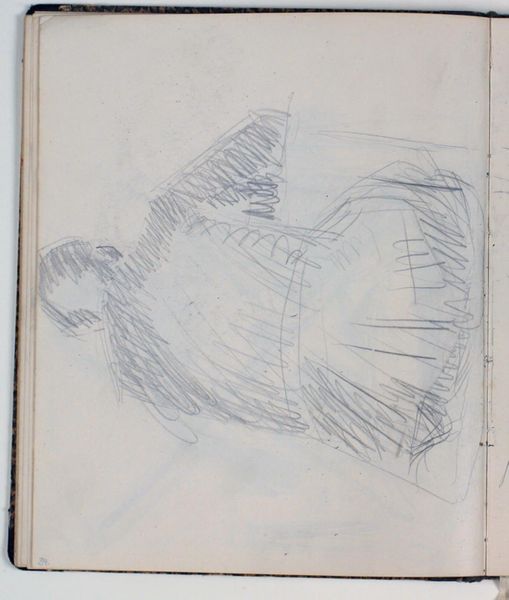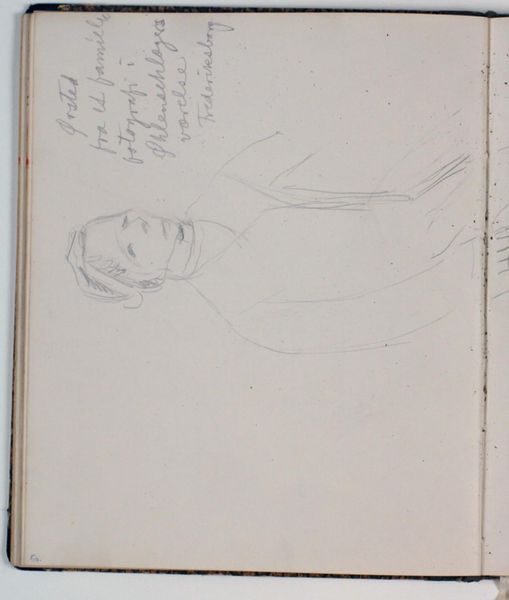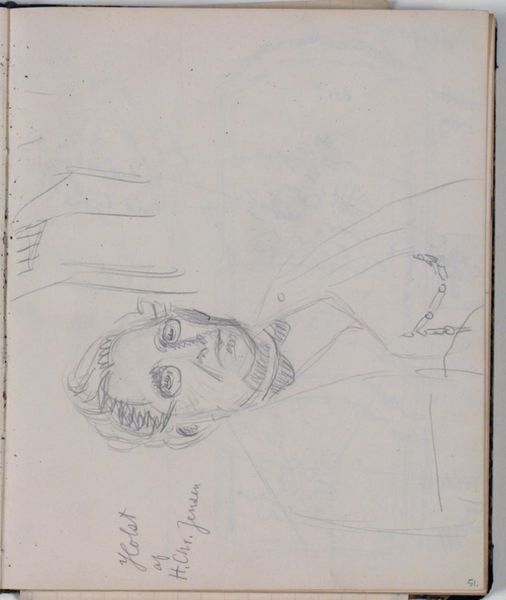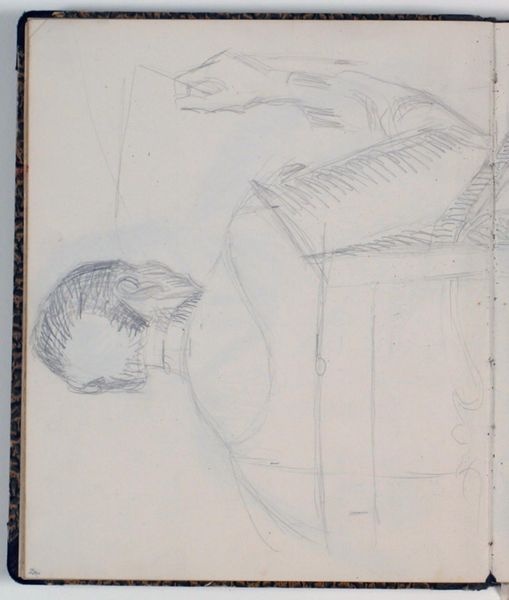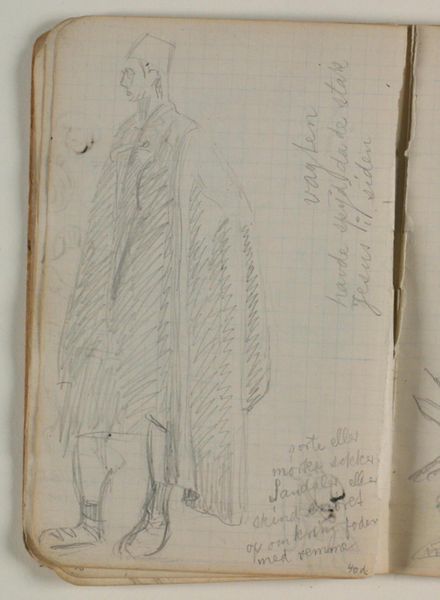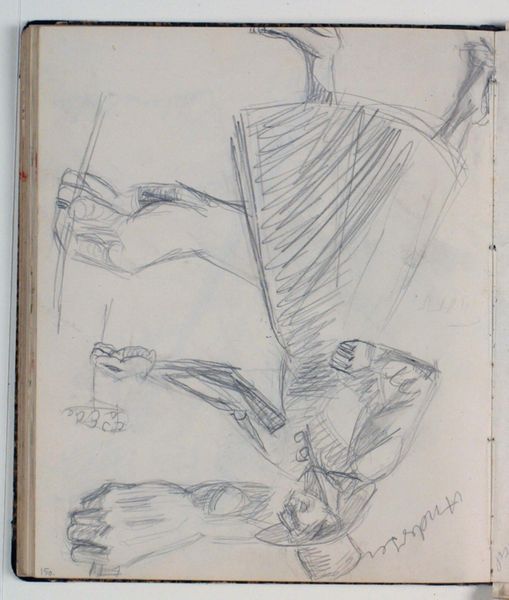
Studie af H. C. Ørsted efter maleri på Frederiksborg af W. Marstrand 1851. Farveangivelser 1930 - 1936
0:00
0:00
drawing, pencil
#
portrait
#
drawing
#
pencil
#
realism
Dimensions: 226 mm (height) x 185 mm (width) x 112 mm (depth) (monteringsmaal), 221 mm (height) x 184 mm (width) (bladmaal)
Editor: This pencil drawing from the 1930s by Niels Larsen Stevns is a study of H.C. Ørsted after a painting from 1851. It's quite sparse and sketchy; what immediately stands out is the almost hesitant quality of the lines. As a historian, how do you approach a piece like this? What story does it tell you? Curator: It’s fascinating precisely because it's a study, isn't it? Stevns, working decades later, is engaging with an earlier portrait of a significant figure. Ørsted was, after all, a hugely influential scientist, and depicting him spoke to Danish identity and intellectual achievement. The original painting would have served a particular public role. Editor: So, this isn't just a simple copy? Curator: Far from it! Consider what Stevns chooses to focus on. He's not creating a finished, polished portrait, but isolating aspects. Is he thinking about the original painting’s cultural impact, or perhaps wrestling with its portrayal of Danish scientific excellence? It makes you wonder why Stevns returns to Ørsted at this moment in history. Editor: It's interesting how this sketch can speak to different eras and intentions. I initially saw a simple drawing, but I now realize there's this conversation happening across time about Danish identity and scientific pride. Curator: Exactly! This study functions as a sort of visual note, a record of Stevns's engagement with both Ørsted and Marstrand's earlier artistic statement. Think about the politics of image making and public perception – Stevns is part of that historical chain, even in this preliminary form. Editor: So, even unfinished, it is very complete in a way. I appreciate learning about what it meant to create the picture, in that context. Thanks for your perspective. Curator: My pleasure! Looking closely at these historical layers enriches how we view art, I believe.
Comments
No comments
Be the first to comment and join the conversation on the ultimate creative platform.
